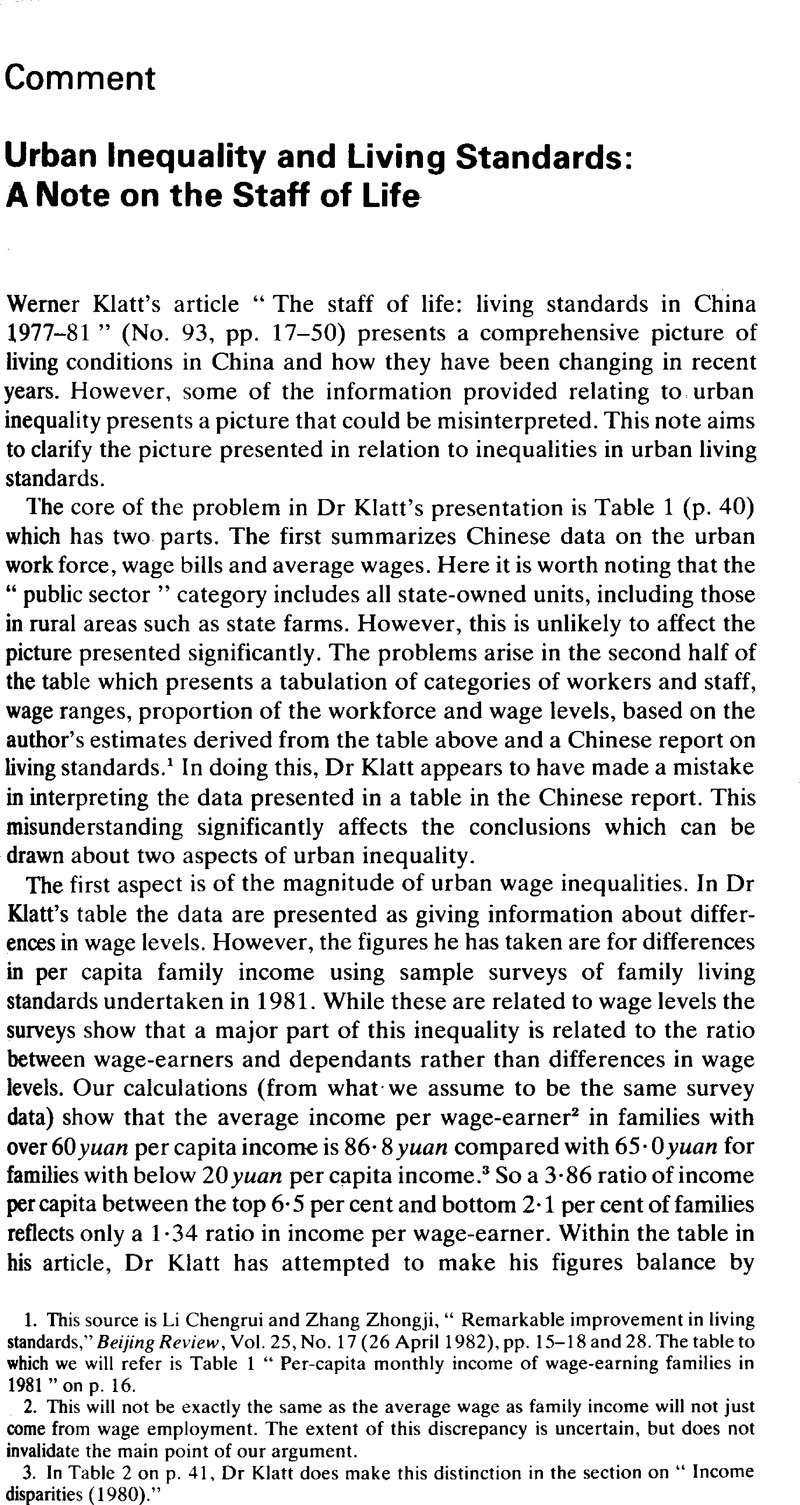Article contents
Urban Inequality and Living Standards: A Note on the Staff of Life
Published online by Cambridge University Press: 17 February 2009
Abstract

- Type
- Comment
- Information
- Copyright
- Copyright © The China Quarterly 1984
References
2. This will not be exactly the same as the average wage as family income will not just come from wage employment. The extent of this discrepancy is uncertain, but does not invalidate the main point of our argument.
3. In Table 2 on p. 41, Dr Klatt does make this distinction in the section on “Income disparities (1980).”
4. These are taken from those of the State Statistical Commission, Zhongguo tongji nianjian 1981 (Hong Kong: Jingji daobao she, 1982), p. 424Google Scholar, on 10 broad sectors of economic activity.
5. Again our less systematic data from enterprise visits confirms this view. However, we do not have any information on the group of industries which Dr Klatt suggests are the highest paid. Other important areas of inequality, which cannot be discussed here for reasons of space, are (i) ownership of units, particularly between state and “small“ collectives: (ii) labour status, between permanent and temporary workers: (iii) sexual inequality: and (iv) geographical location of units.
- 1
- Cited by




